All spiders have eight legs, but that is where similarities end. Scientists discover new species all the time. And some of them are like regular spiders. But others, they look a lot different. Today, we will talk about some weird look of spiders. These creatures are more diverse and fascinating than you could ever imagine.
Spiders are everywhere around us. You might not want to hear that if you have arachnophobia, fear of spiders. To this date, scientists have discovered more than 45,000 species of spiders in the world.
Here are some weird shapes of spiders you can find in the world.
Cebrennus Rechenbegi
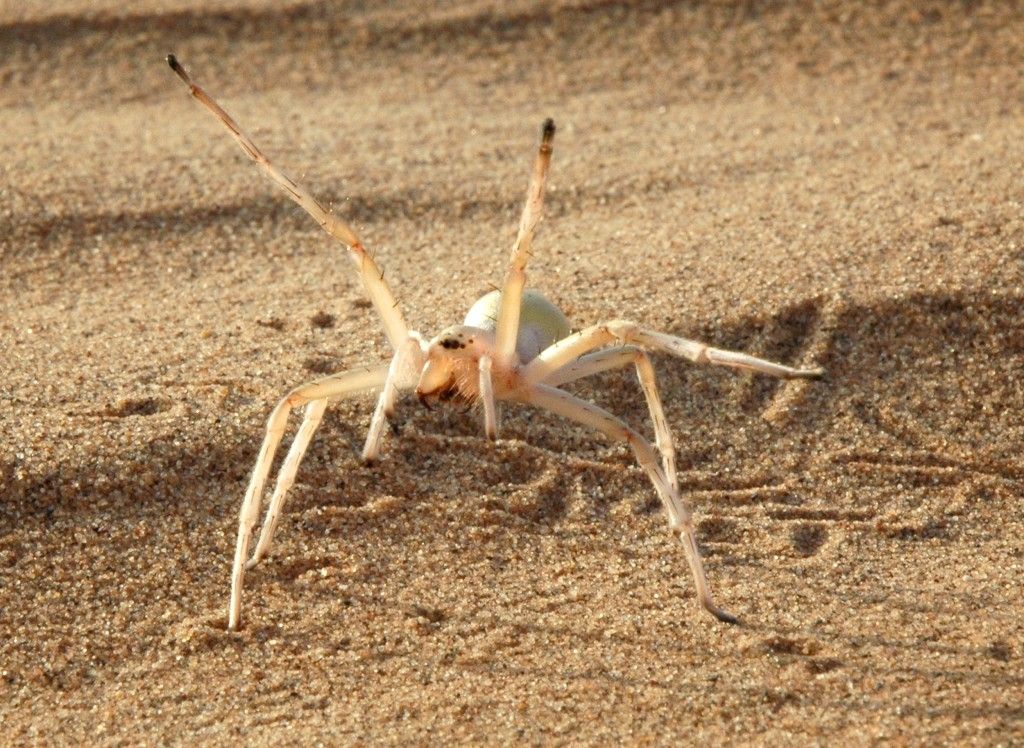
Famous as the flic-flac spider, this one is a native of the Erg Chebbi desert in Morocco. He has the amazing ability to cartwheel its way out of danger.
When he sees predators, he will leap off the ground and do a series of high-energy somersaults. And that is how he makes his quick exit.
He can tumble forward at a rate of 6.6 feet per second. That is two times faster than his maximum walking speed. This spider can also cartwheel uphill if needed.
Myrmarachne Plataleoides
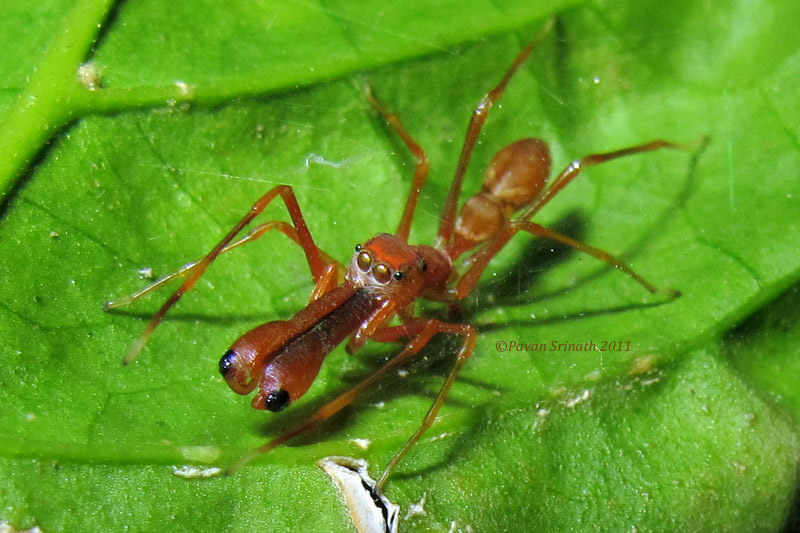
This spider has another amazing ability to evade predators. He is a perfect example of Batesian mimicry. When detecting danger, he can disguise himself as an unpalatable or dangerous animal of another species. In this case, a jumping spider looking like a Weaver Ant.
While the Weaver Ant has a painful bit and produces chemicals that increase the pain, this spider has nothing such.
The Myrmarachne is harmless and shy. However, he does pretend to look as tough as the Weaver Ant. The front section of his body is modified and looks like the distinct head and thorax of an ant. He also has two black spots mimicking the ant’s eyes.
You can find this spider in India, China, and South-Eastern Asia. Other species can imitate the aggressive Weaver Ant, and this spider is just one of the many.
Bat Eating Spider
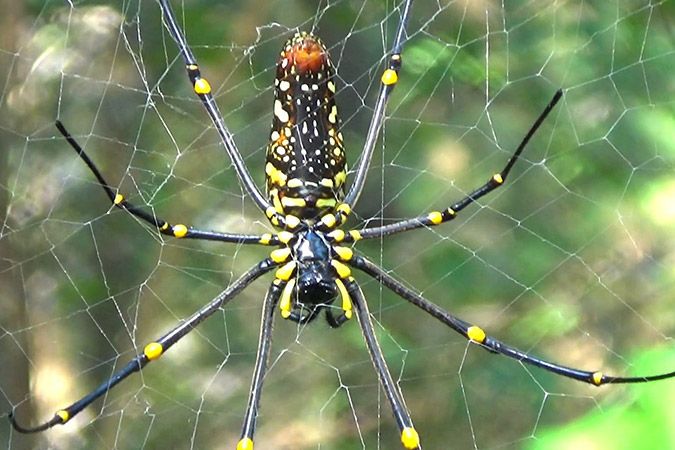
Imagine a spider eating bats. Does that sound possible to you? Well, there are many bat-eating spiders. But we will talk here about the Nephila pilipes spider. Many know him by his common name, Giant Golden Orb Weaver. He regularly catches bats in his web.
These spiders live in countries like Australia, Japan, and India. Females of the species can grow up to 8 inches long (20cm). They are larger than the males.
So, while most spiders prefer flies for their diet, some go for a heftier meal.
Bagheera Kiplingi
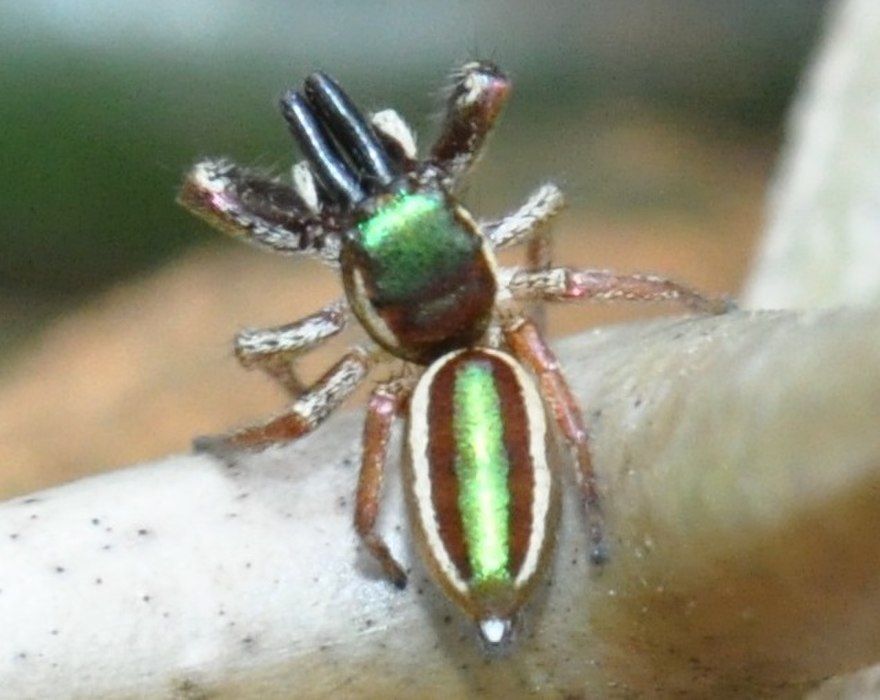
What makes this spider so special? Well, there are a lot of things. For starters, he got named after the panther who raised Mowgli in The Jungle Book.
He follows a plant-based diet, unlike 99% of the spiders in the world. He feasts on nutritious nubs of Central American acacias. It is what trees produce to feed their colonies of guard ants.
These ants protect the trees from predators, but the B. Kiplingi found a way to swoop in and steal the nubs without antagonizing the ants. He jumps, which is why many call him the jumping spider.
This spider can also eat nectar and ant larvae. When times are tough, they practice cannibalism.
Maratus Volans
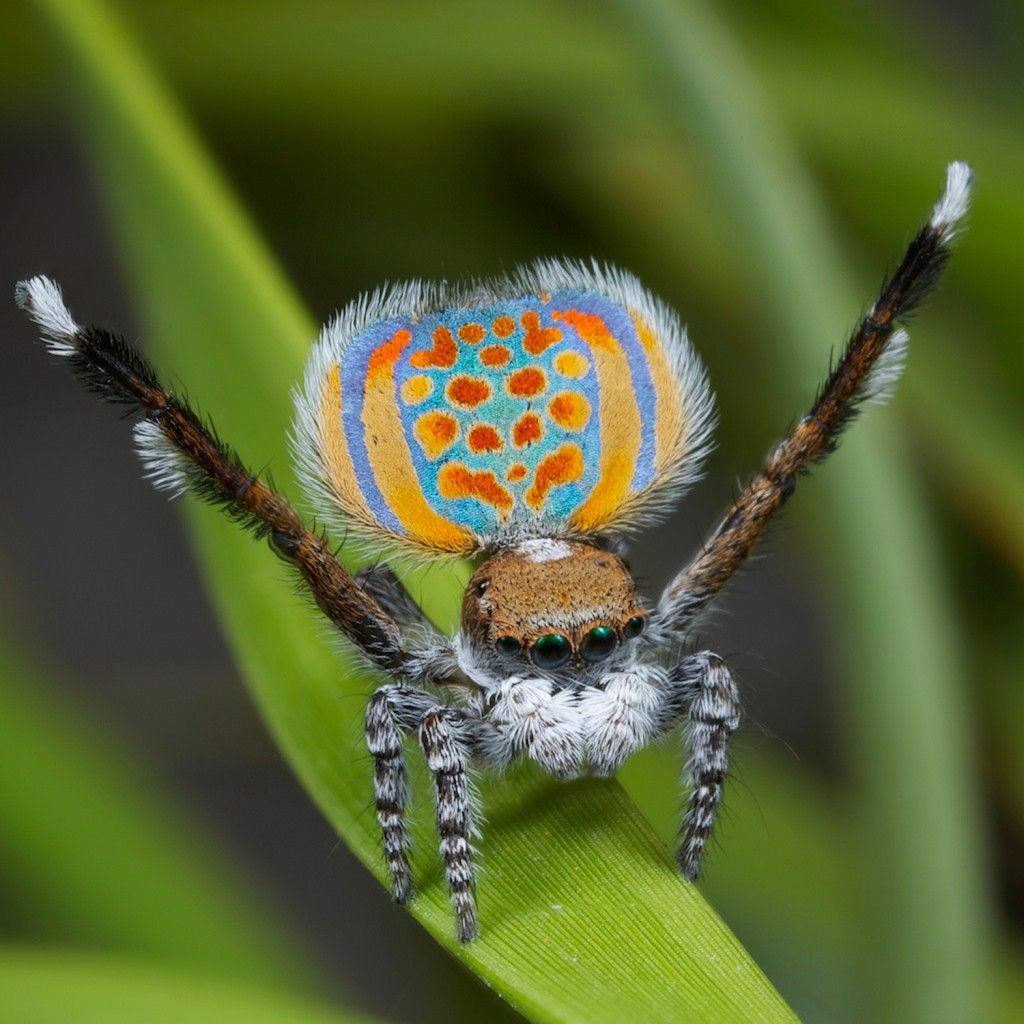
We have another Australian species here. His common name is Peacock Spider. That is because of his colorful body, mainly in the male’s abdomen. Similar to peacocks, the male spider raises his brightly colored, circular flap in the abdomen and uses it to impress females.
Maratus Volans is also a jumping spider. Like most jumping spiders, he has extremely acute eyesight. When he tries to impress females, the spider also vibrates its hind legs and abdomen for a dramatic effect.
Sometimes, the male spider will court several females at the same time. Until recently, many scientists thought that the spider can fly. Their idea that he could glide through the air using his flap when leaping to increase the jumping distance got rejected.
Today, we know that he uses the flap only for display purposes. But his name “volans” translating to “flying” remains.
Theraphosa Blondi
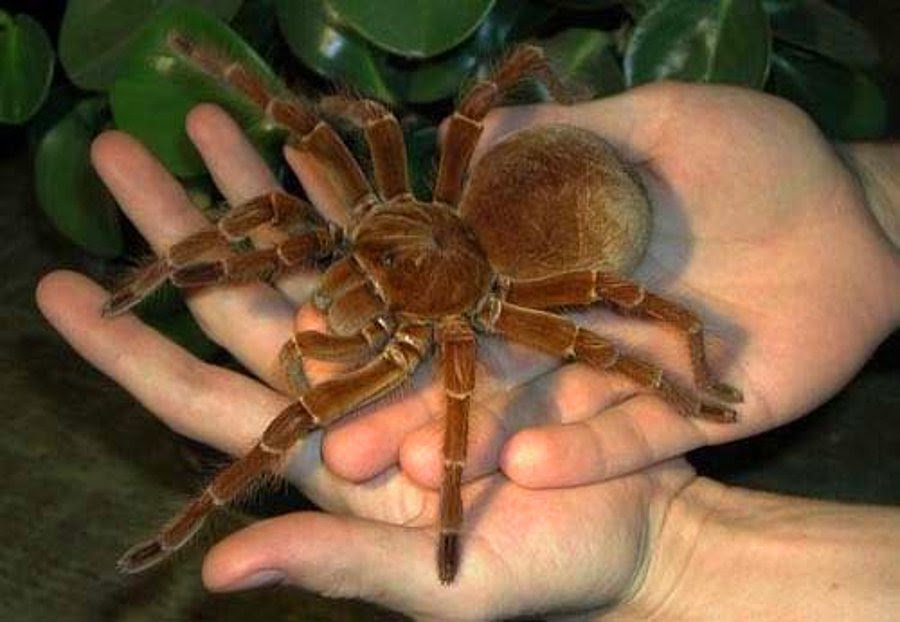
Many believe this is the largest spider in the world. He has the size of a puppy. He goes by the common name South American Goliath birdeater. Native to Guyana, the mammoth spider has a leg span of nearly 12 inches (30cm).
In some cases, his weight reaches the same as a puppy. But do not worry, you can hear this monster coming from afar. Scientists describe his clicking noise of the feet as similar to “horse’s hooves hitting the ground”.
Once you hear that sound, you should probably run away because his fangs can issue a nasty bite. Fun fact: despite his name, he doesn’t feed on birds. He attacks anything he encounters.
Arachnura Higginsi
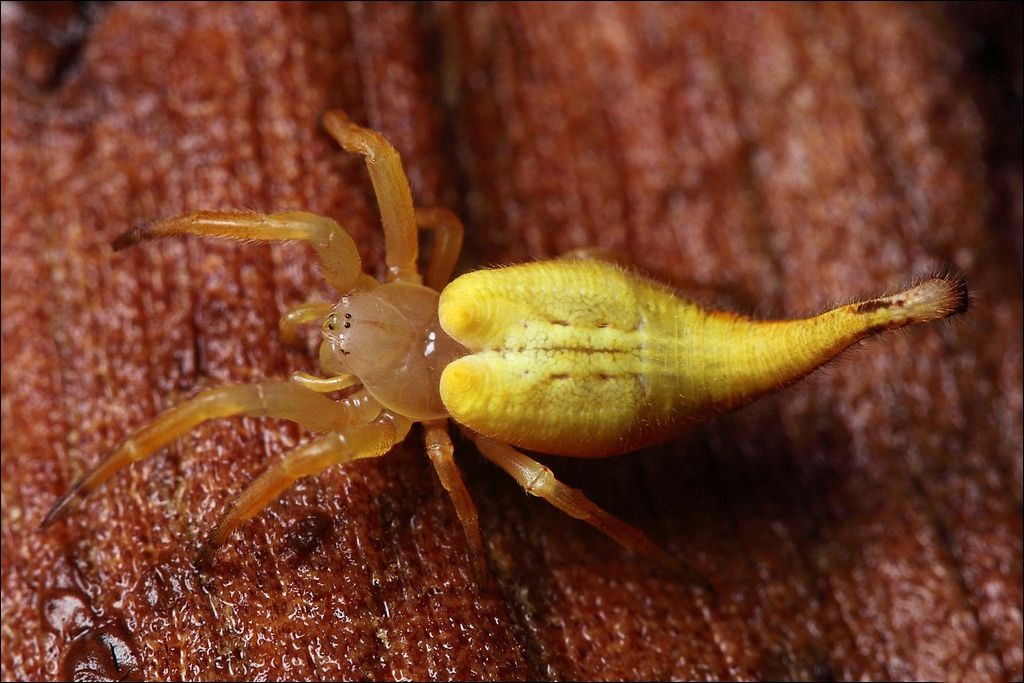
His common name is “the scorpion-tailed spider”. Adults have a long, thin appendage on the tip of their abdomen. Males and juvenile spiders lack this structure. Females can arch their bendable tails over their backside, giving them the appearance of scorpions.
That is how the female keeps predators away, scaring them and making them keep their distance. But it is all for display purposes. Their tail cannot sting. The spider doesn’t present any danger to humans as well.
Caerostris Darwini
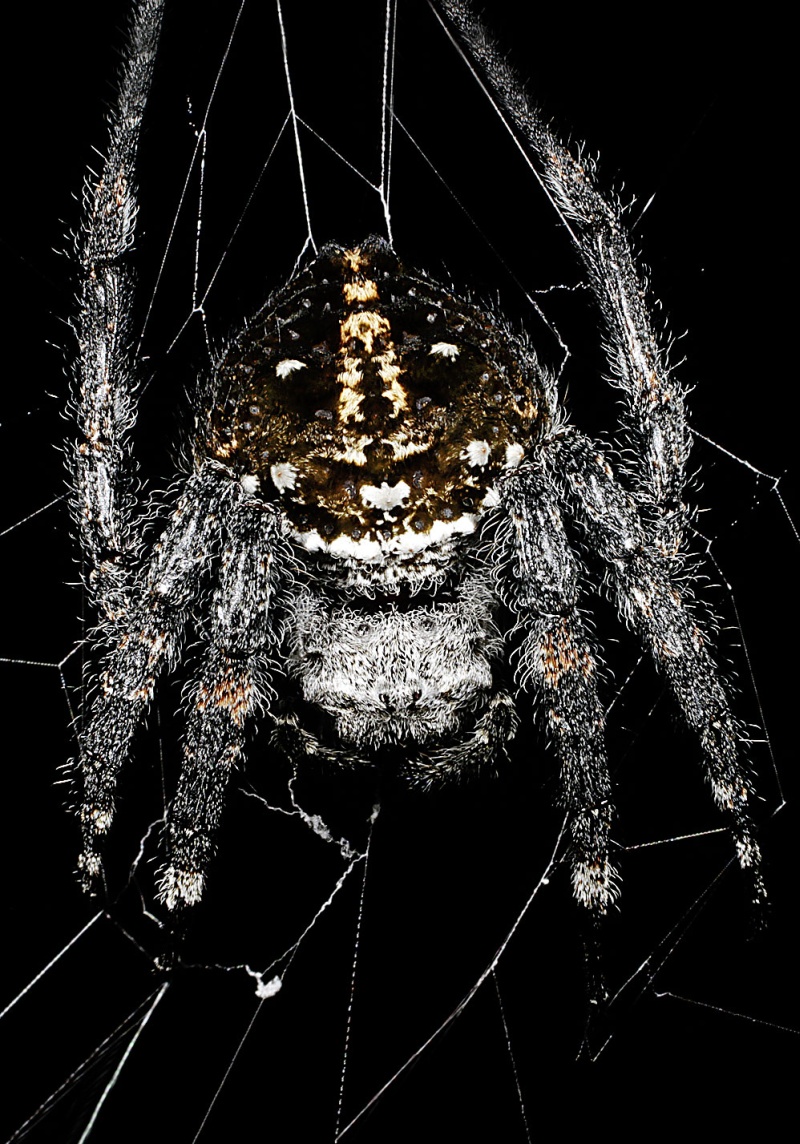
Fun fact: the male Darwini has a desire to please. They are eager to please. They go by the common name Darwin’s bark spider. And the male can exhibit what scientists call a “rich sexual repertoire”.
During sex, males nibble on their partners’ genitals or immobilize them with a web of silk before getting busy. Talk about some kinky sex, right?
And now the creepier part. Males detach their own sexual organs inside their mates to prevent females from mating with other spiders.
This unusual behavior grew out of males’ survival instincts. That is because the female spider is liable to eat her partner after mating.
Spiny Orb Weaver
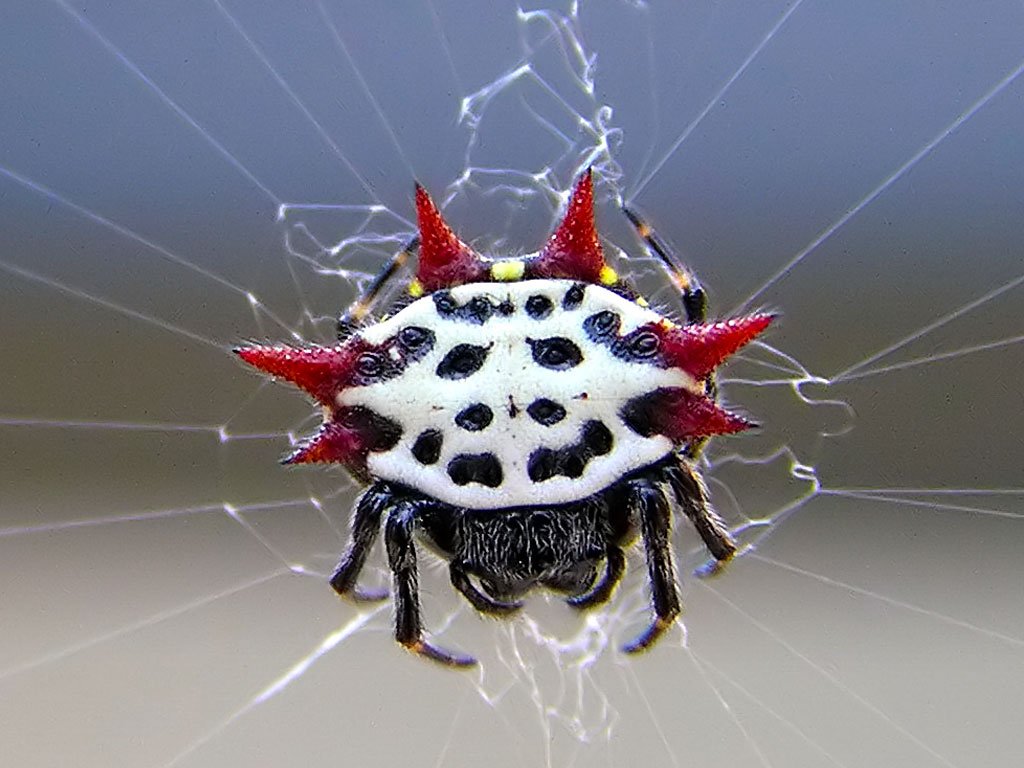
We know them commonly as horned spiders. They are a genus that includes as many as 70 species. Found all over the world, these spiders do not present any danger to humans. They are harmless despite their frightening appearance.
The spiny orb weaver uses his horns and spines to deter birds. These spiders also add small silk flags to the edges of their webs.
Argyroneta Aquatic
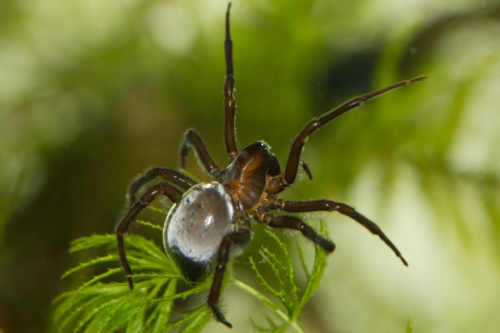
The common name Water Spider or Diving Bell Spider suits this one. It is the only completely aquatic spider in the world. You can find it in Europe and Asia, living in ponds, slow-moving streams, and shallow lakes.
This spider cannot take oxygen directly from water, so he builds an underwater retreat with silk, and fills it with air.
He spends most of the time inside the bell and goes out only to replenish the air in it. The Water Spider feeds on whatever aquatic invertebrate he can capture.



